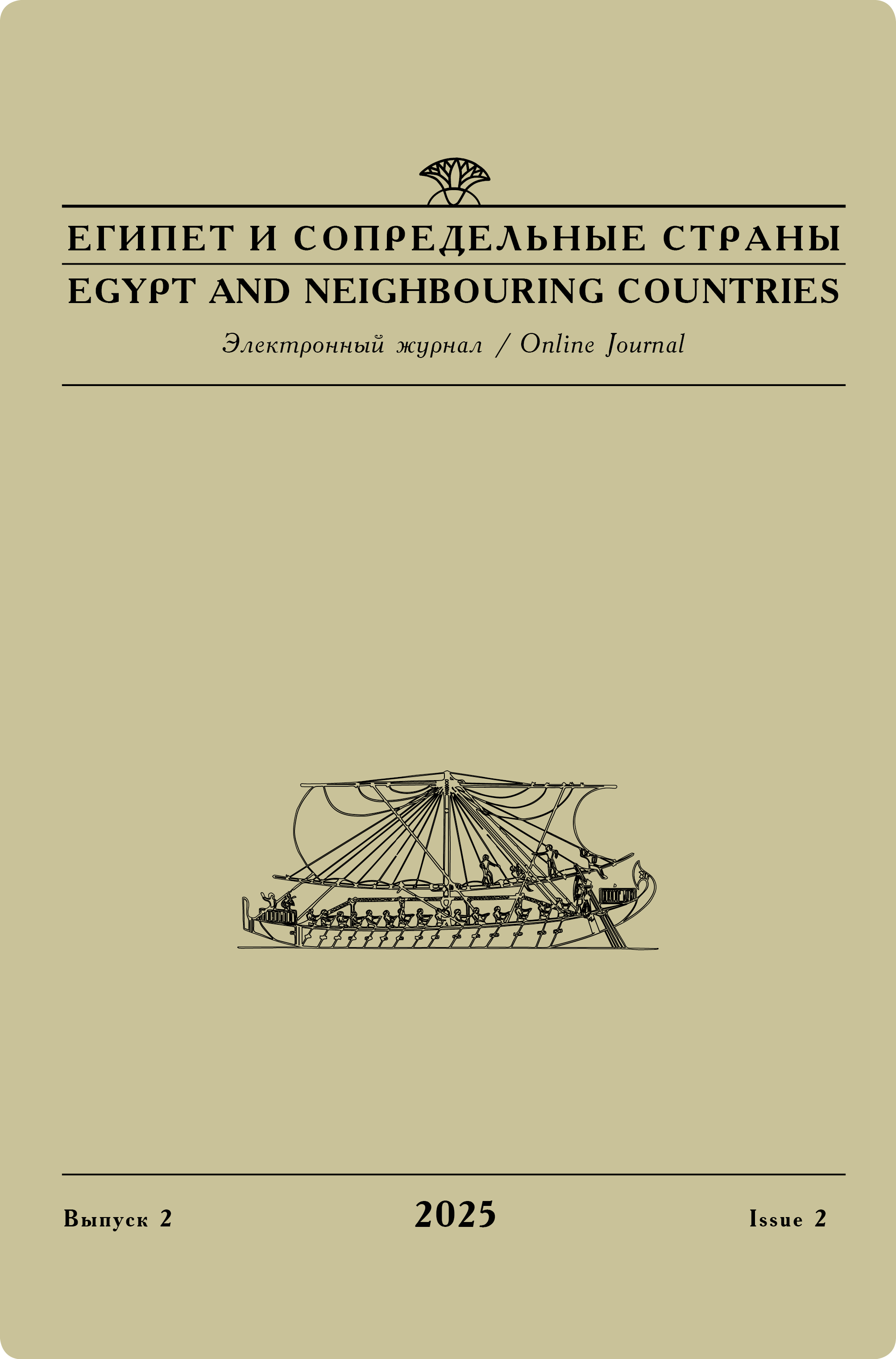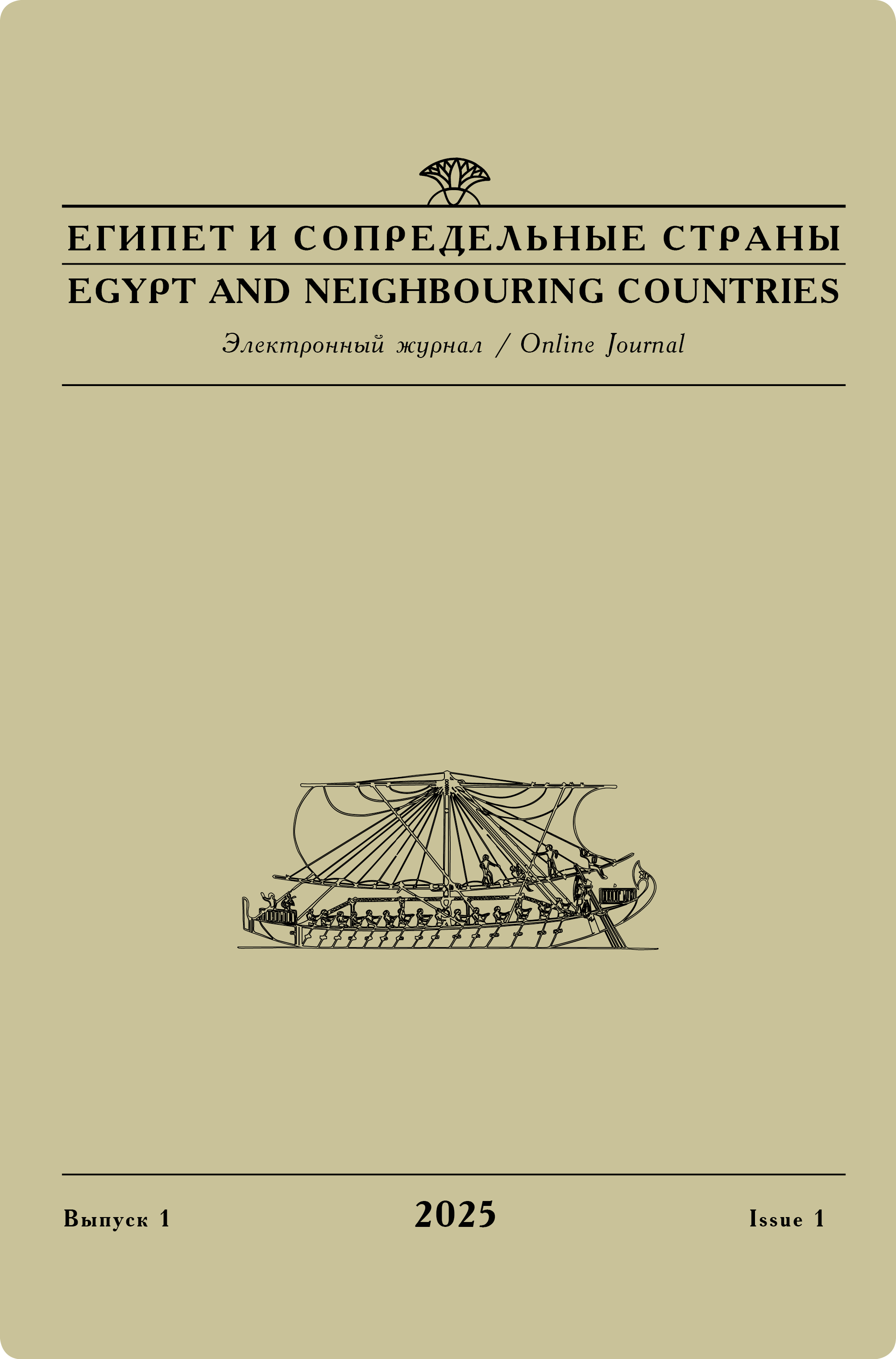Issue 4, 2018
T. A. Sherkova
Unikal'nyi raspisnoi sosud kul'tury Nagada II [A unique painted vessel of the Naqada II period]
A collection of the Los Angeles County Museum of Art (LACMA) includes an Ancient Egyptian clay vessel attributed to a date of 5500–3050 BC, which is impossible since ceramics develop rather rapidly. Obviously, this vessel has not been under investigation so far. This paper aims to fill this gap — all the more so because the vessel is of particular interest in terms of typology of Predynastic ceramics of the Upper Egyptian Naqada culture. The object combines features of two types — D and W. By its form, it may be identified as belonging to the type W, while by its ornamentation (it bears a painted depiction of a boat with a sanctuary and several anthropomorphic figures aboard), it is a regular example of the type D. Investigation has shown that the vessel can be dated to 3500–3100 BC. The female figure on the boat can be identified as the Great Mother, a goddess of fertility in the broad sense of the word, who in the historic period became worshiped under names Nut, Isis and Hathor.
Keywords:
Ancient Egypt, Predynastic period, Protodynastic period, Early Dynastic period, Naqada, ceramics, sanctuary, Great Mother.
Original language — Russian.
DOI: 10.24411/2686-9276-2018-00017
Read full article




